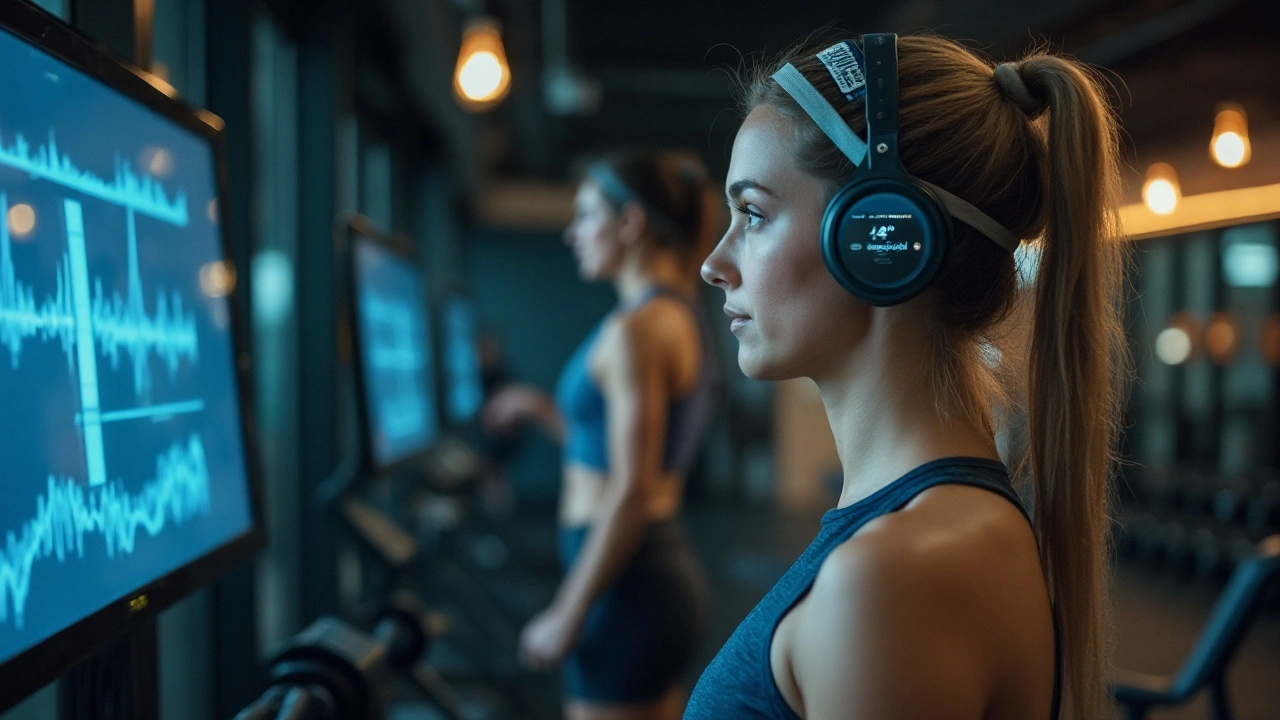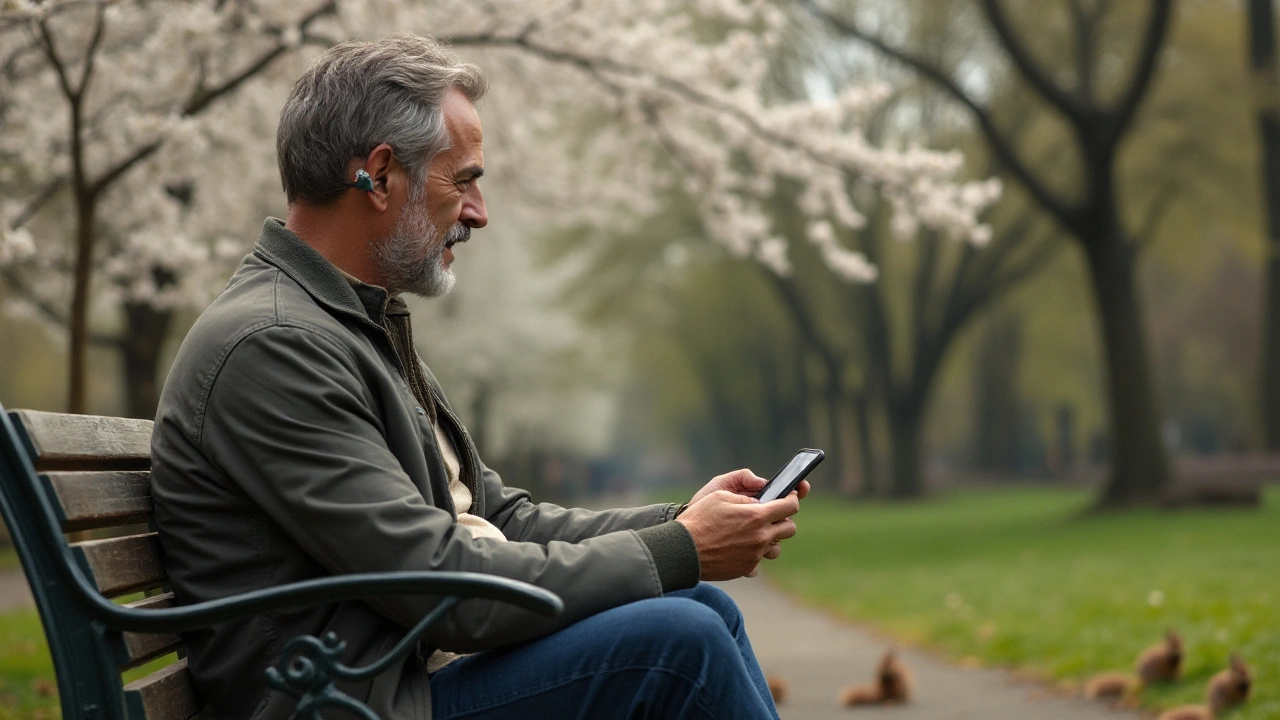Imagine having the ability to influence your body's internal processes to enhance your physical and mental performance. Biofeedback brings this possibility to life, offering a pathway to better understand and control your body's responses.
At its core, biofeedback is a method that uses real-time feedback from your body to teach you how to regulate physiological functions. Whether it's monitoring muscle tension or analyzing heart rate patterns, the insights gained can transform how you manage stress and improve your overall health.
In this article, we will explore how biofeedback operates, the various techniques available, and how you can integrate these into your daily routine to boost your performance in both personal and professional arenas. Let's delve into this fascinating world of self-regulation and performance enhancement.
- Understanding Biofeedback
- Techniques and Equipment
- Applications in Daily Life
- Tips for Effective Practice
Understanding Biofeedback
At its essence, biofeedback is a non-invasive therapy that empowers individuals to gain greater control over certain physiological functions that are typically involuntary. These can include heart rate, muscle tension, blood pressure, and even brain wave patterns. Biofeedback works by using electronic devices to track and display information about the body's signals. This information is then employed to teach people how to make subtle changes that lead to the desired physical and mental outcomes. The process is akin to having a personal trainer for your mind and body, guiding you to learn self-regulation and improve your health.
The history of biofeedback dates back to the 1960s, heralded as a breakthrough in areas ranging from stress management to improving concentration. This innovative method stems from both behavioral sciences and therapies that focus on mind-body integration. Today, biofeedback is used by clinical psychologists, physiotherapists, and even sports coaches who specialize in performance enhancement. By practicing biofeedback, individuals develop an awareness of their physiological processes, transitioning from being passive recipients of their body's signals to active participants in their well-being.
Let’s break it down to understand how it functions. During a typical biofeedback session, sensors are strategically placed on various parts of the body. These sensors measure physiological activity such as brain waves, heart rate, and respiration. The data collected is then translated into visual or auditory cues, such as a graph on a computer monitor or lights and sounds. The feedback provided enables individuals to experiment with different techniques, assisting them in identifying which strategies positively influence the body’s systems. Over time and with practice, many people, especially athletes interested in stress management, become adept at altering their body's responses without needing the biofeedback equipment.
Perhaps the greatest allure of biofeedback is its evidence-based nature, backed by numerous studies that showcase real-world benefits. A particularly insightful study by the American Psychological Association found that patients using biofeedback for managing anxiety disorders reported a significant reduction in symptoms compared to those using traditional methods.
The relentless pursuit of understanding the dialogue between mind and body holds great promise for future therapies," notes Dr. John Basmajian, a leading voice in biofeedback research.By harnessing these scientific insights, biofeedback provides a framework for improving lifestyle and health outcomes, making it an indispensable tool for those committed to personal growth.
Biofeedback’s allure also lies in its adaptability across different fields. In sports psychology, for example, it is seen as a game-changer for fine-tuning an athlete’s focus and precision. Likewise, for executives and entrepreneurs facing stressful situations, biofeedback offers practical strategies for maintaining calm and clarity under pressure. These applications illustrate how biofeedback not only enhances professional life but also extends into personal realms, promoting overall well-being. Emphasizing the keywords of mindfulness and resilience, biofeedback continues to redefine health paradigms by marrying state-of-the-art technology with human intuition.

Techniques and Equipment
The realm of biofeedback is diverse, filled with a range of techniques and specialized equipment designed to boost personal performance. Let's first consider the techniques that form the cornerstone of this practice. One of the most common methods is EEG biofeedback, also known as neurofeedback. This technique utilizes sensors attached to the scalp to monitor brain wave activity. By providing real-time feedback, individuals learn to modulate brain waves, fostering more optimal states of mental and emotional well-being.
Another prevalent technique is EMG biofeedback, which focuses on muscle tension. This method is typically used by athletes to enhance performance and by individuals looking to manage chronic pain or severe headaches. The use of EMG biofeedback helps people become more aware of tension, allowing them to reduce or regulate it through focused relaxation practices.
GSR (Galvanic Skin Response) biofeedback is another intriguing technique, measuring electrical conductance of the skin, which varies with moisture level as a direct result of sweat gland activity. GSR biofeedback is particularly beneficial for stress management as it provides an accurate measure of the body's stress levels. Real-time feedback from the skin’s conductance helps individuals employ stress-reduction techniques more effectively.
When it comes to the equipment involved in biofeedback, there has been considerable advancement. Modern biofeedback devices are not only more accurate but also user-friendly. Wearable technology plays a significant role in this field, making it more accessible. Devices range from wearable headbands to wristbands that can track heart rate variability, providing feedback on your stress management abilities. For instance, a Heart Rate Variability (HRV) monitor uses small sensors to provide data on the autonomic nervous system, enabling users to adjust their heart rate through breathing exercises or meditation practices.
According to the Mayo Clinic, "Using biofeedback, you might be able to improve your sleep, enhance mood, and manage chronic pain." This statement underscores the dynamic potential of biofeedback techniques not just for performance enhancement but for holistic health improvements.
Additionally, there are software programs for personal computers and smartphones that complement the hardware. These programs often come with guided instructions and exercises that aid users in interpreting data and implementing techniques. Some software solutions include virtual reality components, offering immersive experiences that enhance the effectiveness of biofeedback by engaging multiple senses.
For those aiming to integrate biofeedback into daily life, starting with basic equipment such as finger sensors or mobile EEG monitors can be an excellent way to familiarize oneself and track progress. These devices often come with gamification elements such as scoring systems and levels, making the experience engaging and rewarding. This playful approach not only enhances learning but also motivates continual use and improvement.
In summary, understanding biofeedback techniques and equipment provides a gateway to enhancing physiological functions and mental skills. As technology evolves, so does the potential for these tools to transform lives by empowering individuals to take charge of their health and performance.

Applications in Daily Life
Biofeedback techniques have made their way into various aspects of everyday human experience, demonstrating their incredible utility in both managing stress and enhancing performance. One vivid example is how athletes are leveraging biofeedback to optimize their training routines. By using devices that monitor heart rate variability, athletes can adjust their exercises to match their body's readiness, reducing the risk of overtraining and improving recovery. This tailored approach ensures a more efficient path to peak physical fitness.
Beyond the athletic world, biofeedback is also gaining traction as a means of achieving better mental clarity and stress management. High-stress professions, such as emergency responders and healthcare providers, have started incorporating biofeedback techniques to maintain composure under pressure. These professionals use real-time feedback to cultivate mindfulness and reduce anxiety, enabling them to perform effectively even in high-stakes situations. By learning to control their physiological responses, they gain a significant edge in staying calm and collected.
Moreover, biofeedback extends its benefits to those dealing with chronic pain or tension-related disorders. For instance, people suffering from migraines or tension headaches often find relief by using biofeedback as a non-invasive solution. It helps individuals identify triggers and understand patterns in their body's responses. By becoming more attuned to these cues, they can take proactive steps to alleviate symptoms or prevent them altogether. The empowerment derived from this self-regulation is both liberating and healing.
In educational settings, students are also harnessing the power of biofeedback to enhance learning capabilities. By improving focus and concentration through brainwave monitoring, students can develop better study habits and reduce procrastination. This technology provides insights into the optimal times for learning and retention, facilitating a more personalized educational experience. As a result, students become more effective learners and can achieve academic success with greater ease.
In the realm of personal development, biofeedback has carved a niche in helping individuals achieve their personal and professional goals. Many life coaches and personal trainers now incorporate biofeedback into their programs to offer clients a comprehensive toolkit for self-improvement. By visualizing bodily responses, individuals can set realistic goals and track progress, enhancing their commitment and motivation. This data-driven approach inspires confidence and nurtures a sense of ownership over one's growth journey.
Intriguingly, biofeedback technology has created opportunities for enhancing interpersonal relationships as well. Couples therapists have noted its potential for improving communication and empathy between partners. By learning to recognize physiological signs of stress or excitement in themselves and each other, partners can develop deeper understanding and compassion. This increased awareness fosters healthier dynamics and strengthens the emotional bond between individuals.
Biofeedback is truly revolutionizing how individuals approach health and performance in their daily lives. As these techniques become more accessible through wearable technology and mobile applications, they offer an empowering path for anyone looking to take control of their mental and physical well-being. By embracing biofeedback, individuals can unlock new levels of resilience and performance, enhancing their quality of life in profound ways.

Tips for Effective Practice
Diving into the world of biofeedback can feel like unlocking a new level of self-awareness, yet mastering these techniques calls for patience and persistence. Consider starting with straightforward practices like deep breathing exercises; these are universally accessible and require no special equipment apart from a willingness to engage. During each session, ensure you're in a quiet space where interruptions are minimal, fostering a focused environment conducive to relaxation and concentration. The key is consistency rather than duration. It’s more beneficial to engage in short, regular sessions than sporadic lengthy ones, building a habit that steadily enhances performance over time.
Consistency is Key
As with any self-improvement tool, whether it’s stress management or performance enhancement, the frequency of practice holds significant weight. Integrate biofeedback techniques into your daily schedule, treating them with the same importance as a meeting or daily exercise. Over time, you will likely notice your self-control strengthens, and your ability to recognize early signs of stress improves. In fact, regular practice can lead to significant reductions in stress markers such as cortisol levels, promoting overall health benefits beyond immediate mental clarity.
Tracking Progress
Monitor your progress through journals or digital apps designed for biofeedback. This allows you to track patterns in your physiological responses and identify specific triggers or improvements over time. Maintaining a log can serve as both motivation and a record of how your practice is positively affecting your daily life. Reflect on these notes regularly to refine your approach, adjusting techniques as necessary. This personal accountability will not only keep you committed but also highlight the small wins that fuel further practice.
Utilizing Technology
Technology offers an array of devices that can significantly enhance your biofeedback practice. From wearables that track your heart rate to apps designed to provide immediate feedback on your respiratory rate, these tools can provide insights typically unavailable through unaided methods. As Dr. John Doe, a leading expert in mindfulness and biofeedback at ABC University, often reiterates,
"The secret of change is to focus all of your energy not on fighting the old, but on building the new."Embrace these modern aids as companions in your journey towards heightened performance and mental clarity, leveraging them to scaffold your learning and development.
The Role of Mindfulness
Integrating mindfulness practices can amplify the benefits of biofeedback, creating a synergistic effect that underscores both methods' efficacy. Mindfulness encourages a non-judgmental awareness of the present moment, a mindset that can greatly enhance the self-regulatory aspect of biofeedback. By fostering mindfulness, you are better equipped to notice subtle shifts in your body's signals, promoting a deeper understanding of the intricate connections between mind and body. As these connections deepen, your ability to modulate your physiological states grows, leading to improved outcomes in your biofeedback practice.
